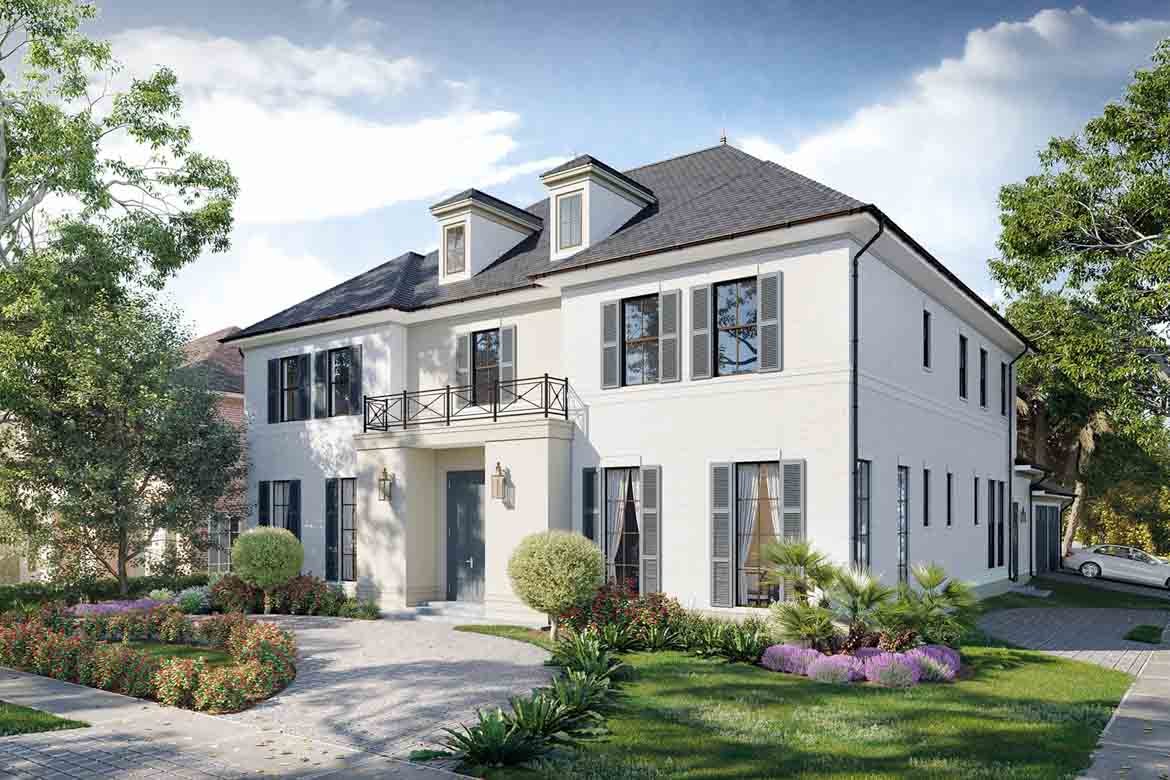Rendering is a process of covering house facades with a mixture that will change both the appearance and functionality of the house exterior. Renders are made from cement, sand, lime and water usually in a ratio of 6 sand : 1 cement : 1 lime. Rendering a house is a quick and easy way to give the exterior a complete makeover.
Rendering costs and considerations
How much does it cost to render a house? Well, this depends on a number of factors. Low-end rendering projects will usually cost at least $30 per square metre. The average Australian house has an approximate 400 square metre façade, making the average low end rendering project around $12,000. However quality jobs are usually between $50-$80 per m2, so the price can climb much higher.
Your home size and layout will make a significant difference in how expensive a rendering project is. A two-story home can cost up to $50,000 to render. A general range is between $12,000-$20,000, but you can calculate an estimated cost yourself. To do this, measure your exterior and discern the rough square footage of your exterior walls. You can then budget how much to spend per square metre (e.g. $30-$80) with an idea of how much the overall cost will be.
Process
The next option would be to contact some prospective contractors. There are a few different ways that house rendering can be paid for, including up front charges or fees by the square footage. If you are concerned with budgeting, it might be better to commit to an inflexible up-front cost so that you know there will not be any surprises down the line. DIY options are available, but not recommended for the inexperienced.
Another factor that affects the rendering process is which type of render you choose. Cement rendering is the most commonly used type, and it takes about a week to cover a full house exterior (as does lime). One wall alone will take 1-2 days. Because of this, some people choose to render only the front façade of their house because it is much cheaper and people are not as likely to look at the back of the house. Acrylic render takes longer to finish and will usually need 1-2 weeks for the whole house (2-3 days for a wall).
What are the benefits of rendering a house?
Rendering a house has a number of benefits, but it is most commonly done for an improved aesthetic appearance. However, rendering also enhances the house protection against the weather, as well as insulation capabilities, overall durability, and resistance to water. For more information on rendering a house and all of the costs you will have to navigate, see here.
To help inspire your next renovation, you may want to look at brick rendering before and after images. This will help you to recognise the difference that a rendering job can make on a home exterior. Browse the list below for a look at rendered brick houses and the various rendered houses colour schemes you can find.
Rendering a house before and after: House rendering before and after photos Australia
5. 39 Oakley Road, North Bondi NSW
Before:
After:
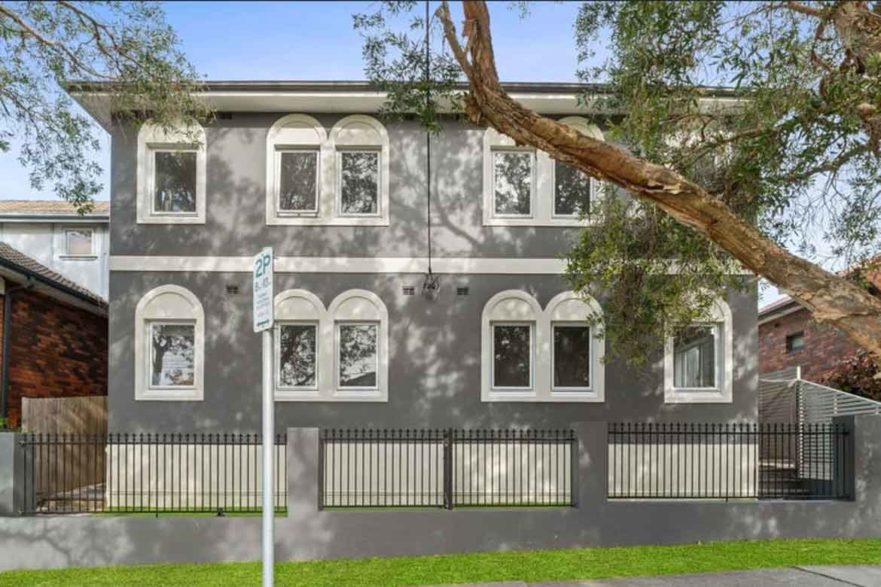
This property in the heart of Bondi was transformed from a traditional red-brick house into a gorgeous modern home with a lot of style. The homeowners kept the old-school features of the home intact, highlighting the vintage arched windows with a chic white-on-grey colour scheme.
4. Flooring America Enid Rendering
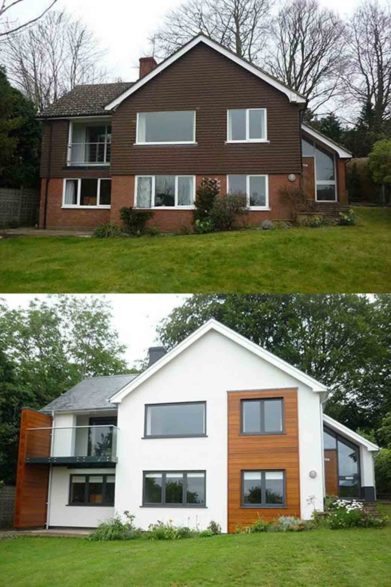
This is one of the best examples of how a house front design can be completely changed through rendering. This home went from drab traditional building to a stylish modern home with sleek materials and a multi-layered façade. See more from flooring America here.
3. Black
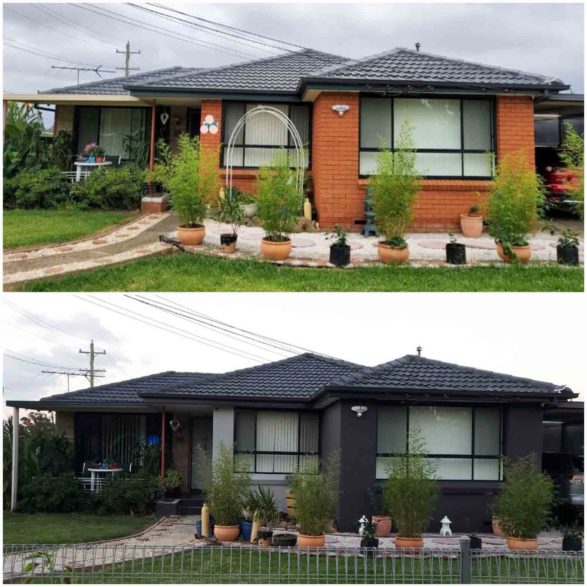
One of the boldest colour choices for cement rendered homes is a dark black. This classic Australian home in NSW was completely transformed by Amigos Rendering with a black finish. A moody and contemporary new look was everything that this home needed to elevate its exterior façade. View more by Amigos Rendering here.
2. M.J. Exteriors Melbourne
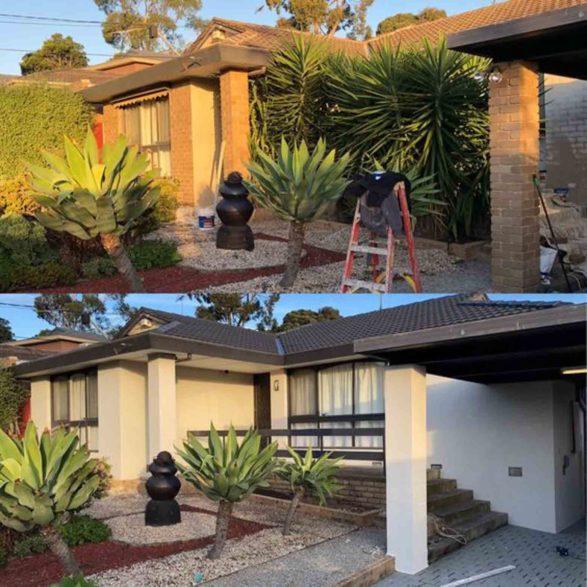
White is another of the favourite house render colours because it creates such a pristine new look. The acrylic finish rendering done here by M.J. Exteriors Melbourne has transformed a typical suburban house into a dynamic, modern home. A contemporary colour scheme of black and white accentuates the rock garden which before seemed out of place. For more examples of the work done by M.J Exteriors and Rendering, you can browse their photo gallery, rendering portfolio, or even their Instagram.
1. 1970s brick home to farmhouse

Rendering doesn’t always have to make your home into a sleek contemporary building! In fact, this renovation did just the opposite. This traditional 1970s brick home looked fairly similar to any other: muted colour scheme, classic brown and white mortar, and white panelling. The exterior renovation changed all of that.
Rendering a traditional house with white acrylic gives it a timeless look. Many homeowners choose to bring this look into the 21st century by accentuating it with a monochromatic colour scheme, often offset with dark greys and blacks. By contrast, this homeowner chose to lean into a vintage farmhouse design by switching out the white panelling for natural timber. Natural timber has a gorgeous, rustic appearance that seems perfectly suited to this cutesy home design. This should be taken as a sign of the versatile nature of house rendering – whether you want a cottagecore or concrete look, rendering a house is always going to be an option. For more information on top form house rendering projects, see here.

